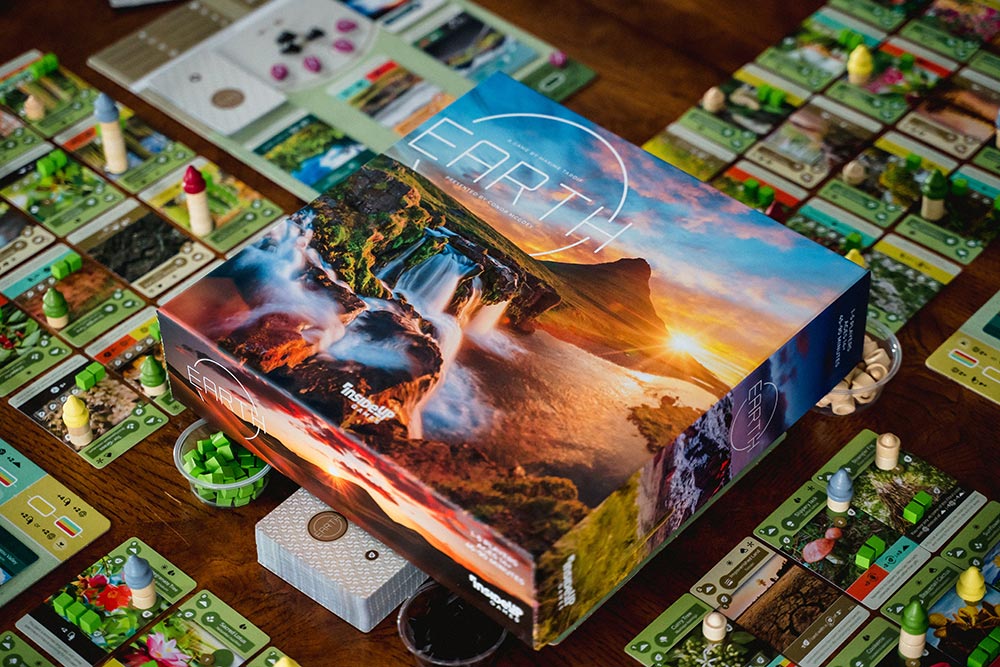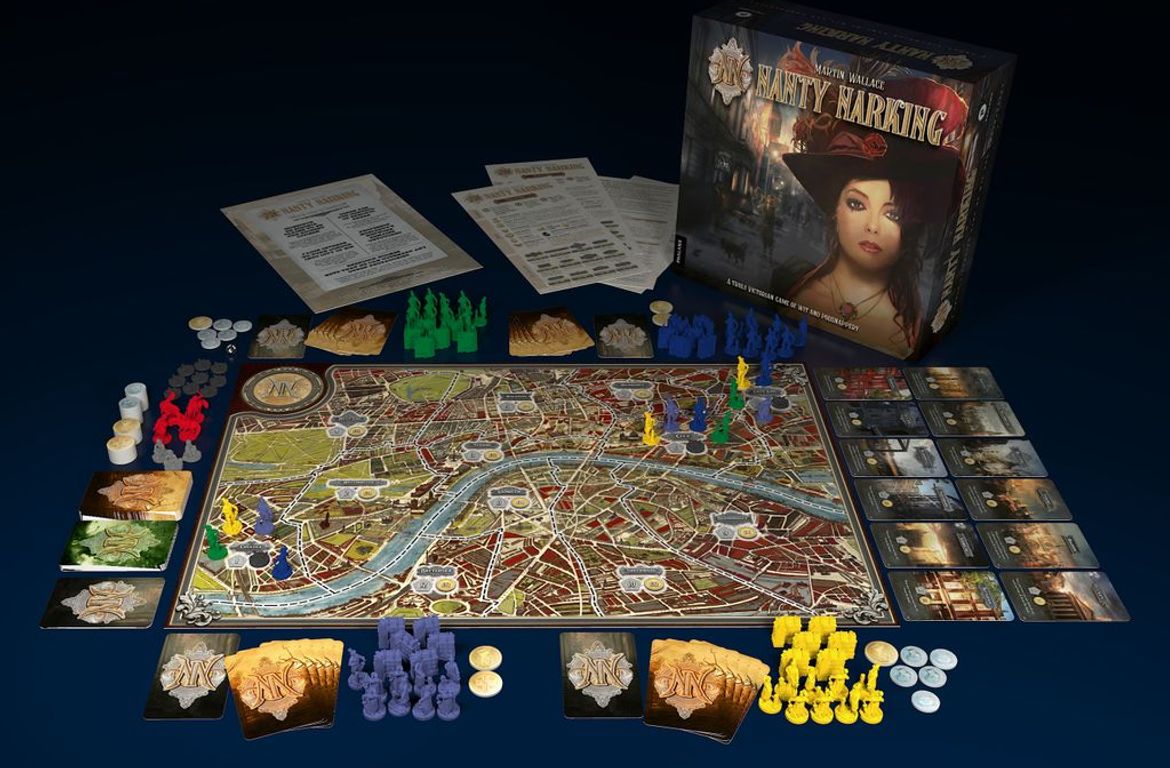
Earth: Istražite Prirodna Čuda planete Zemlje kroz Društvenu Igru
U svijetu društvenih igara, Earth se ističe kao igra koja kombinira ekološku svjesnost, strategiju i prekrasnu umjetnost. Ako ste ljubitelj
In late October 2022, I previewed Phil Walker-Harding‘s game Monolyth, which CMON had shipped to me with no advance notice of the game’s existence.
If you read that earlier post, jump past this explanation of gameplay for an update on my thoughts about the game:
To set up, choose a structure card at random, then place it on the main board, along with the appropriate structure tokens, level tokens, and prophecy tokens based on the number of players. Place the crystal marker next to the main board, then draw twelve random polyominoes from the box and place them in a circle around the main board. The polyominoes come in five colors, and all 1×1 blocks in those colors are placed to the side.
On a turn, move the crystal 1-4 spaces clockwise, then take the polyomino in that space and add it to your 4×4 player board, with nothing placed outside that grid and no part of the polyomino hanging over an empty space; alternatively, you can remove this polyomino from the game and take a 1×1 block of the same color, then add that to your player board. In either case, draw a random polyomino from the box and place it where the crystal started this turn.
Instead of moving the crystal, you can choose a prophecy token from the main board and add it to a side of your player board. Each player board has four different colors around the four edges, e.g., blue, orange, black, and teal.
Halfway through the game
When you fill all the spaces of a level on your player board, take the largest level token from the main board. If your construction fits the guidelines of the structure card, then you claim the highest available structure token.
Keep taking turns until someone has completed their 3D monolith, which is 4x4x3 in a 3-4 player game and 4x4x4 in a 1-2 player game, after which you finish the round. If a prophecy has been fulfilled, e.g., if you placed a 12 on the orange side of your player board and you have at least 12 orange blocks on that edge of your player board, then you score points equal to that prophecy token.
Sum the points of your structure token, level tokens, and valid prophecy tokens to see who has the highest score and wins.
I’ve now played Monolyth four times on that review copy, twice with two players and once each with one and three players. The game design fits the quite familiar model of an isolated multiplayer experience, one in which we draft things from a shared pool and (perhaps) compete to claim shared goals, but otherwise exist in our own bubble building our own thing with no impact on other players.
Cascadia, which I covered in June 2022, is probably the best-known example of this experience from the past few years, but between my first and fourth games of Monolyth, I also found the shared drafting/isolated building pairing in Triggs, Queensland, Spots, and Village Rails. I will confess to groaning internally when Steph Hodge started explaining Village Rails at BGG.CON 2022 because I feel I’ve had my fill of this type of design.
This isn’t to say the game designs are bad, mind you. In fact, I adore Triggs and will post more about it at some point. Rather, I often feel in such games that my opponents have been reduced to nothing more than an automated opposition. Village Rails, for example, uses the purchase system from Small World — pay a coin for each thing in the market queue that you skip — but without the interactive competition on a shared game board that makes my choice meaningful relative to what you’re doing or how you could respond to that choice.
The design structure of Monolyth nicely pulls you in three directions, with your goals for structure, level, and prophecy interfering with one another and making it impossible to do everything — which means that it almost doesn’t matter whether an opponent takes the optimal block from the choices available. As in Cascadia, your drafting choices in Monolyth might damage another player’s ability to score points, but you’re probably not choosing a polyomino with that intention unless it already furthers your own goals.
For more thoughts on Monolyth, watch me say and do things in this video:

U svijetu društvenih igara, Earth se ističe kao igra koja kombinira ekološku svjesnost, strategiju i prekrasnu umjetnost. Ako ste ljubitelj

U svijetu društvenih igara, rijetko koja igra uspijeva obuhvatiti bogatstvo povijesti, strategije i priče poput Nanty Narkinga. Ova igra, smještena